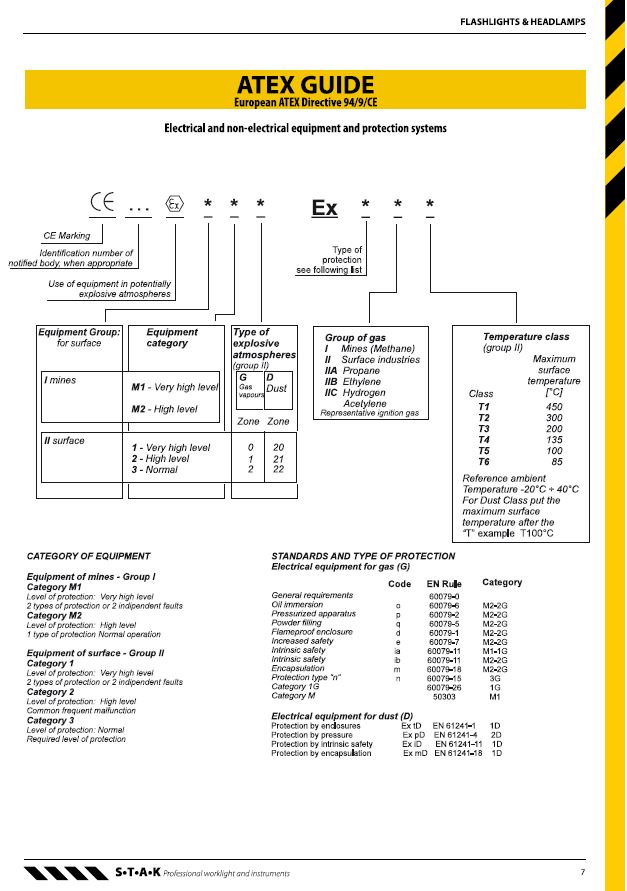ATEX GUIDE
The term ATEX (ATmosphere EXplosible) includes all situations where there is a risk of gas and dust explosion. Companies and organizations that work in explosion-hazardous environments must therefore take measures so that employees can carry out their work in a safe manner. The easiest way to ensure explosion protection is to ensure that no combustible dust is present. If this is not possible, the conditions in an explosive atmosphere must be controlled. There are 2 ATEX guidelines within the EU for this.
Under the European directive ATEX 153, employers are obliged to indicate an ATEX zoning in areas where explosive substances are present. The ATEX 114 approved equipment is divided into categories, which indicate in which zones the equipment may be used.
To arrive at a zone division, the following components are considered:
• The sources of danger, all points where gas, vapor or dust can be released
• It is calculated which quantities of gas, vapor and dust can be released in the area
• The probability is calculated that a hazardous explosive mixture is present
The final zone classification is determined according to how frequently an explosive mixture can occur.
Zone Type of explosion hazard Explosion hazard present in % of the time
Zone 0 Gas explosion hazard > 10% of the operating time
Zone 1 Gas explosion hazard between 0,1% en 10% of the operating time
Zone 2 Gas explosion hazard < 0,1% of the operating time
Zone 20 Dust explosion hazard > 10% of the operating time
Zone 21 Dust explosion hazard between 0,1% en 10% of the operating time
Zone 22 Dust explosion hazard < 0,1% of the operating time

Contact details
A. van Nieuwenhuizen & Zn B.V.
Ecologieweg 3b
3343 LM Hendrik-Ido-Ambacht
The Netherlands
E info(at)vannieuwenhuizen-bv.nl
T +31 78 6428783
F +31 78 6428784



